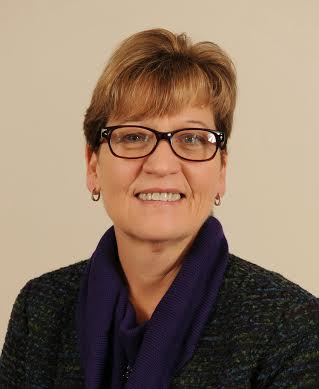In collaboration with CHIME, Becker's Hospital Review'snew "Life of a Healthcare CIO" series features leading hospital and health system CIOs from across the country who are sharing their experiences, best practices and challenges.
To recommend a CIO to be featured in this series, please contact Helen Gregg (hgregg@beckershealthcare.com).
An interview with Pam Banchy, RN, CIO of Summa Western Reserve Hospital in Cuyahoga Falls, Ohio. (Interview has been edited for length and clarity.)
Q: You have been a CIO for almost two years, how have you seen your job change?
Pam Banchy: I've been in my current position as CIO for almost two years, in healthcare IT for over 15 years and in healthcare for 30 years.
Over the years, I have seen significant transformational changes through technology enhancements in clinical and financial/business operations. This rapid growth and utilization of technology has provided significant safety enhancements for our patients and efficiencies throughout healthcare. With this growth, the expansion of roles and responsibilities has provided a great professional opportunity for me.
Q: In your time with Summa Western Reserve Hospital, what has been your biggest accomplishment?
PB: In serving as CIO, I was fortunate to be able to create a highly talented team of IT professionals that together, we were successful in implementing a totally integrated electronic medical record for the entire hospital — providing both clinical and business solutions — on March 17, 2013. This was a significant organizational transformation that was embraced by the entire hospital community. It has resulted in the highest degree of automation at our facility. The support provided to the entire organization by our President and CEO, Robert Kent, DO, the medical staff and executive teams was a significant key to our success. We literally transformed the way care was delivered in all aspects of how we treat our patients and meet our business needs, overnight. Summa Western Reserve Hospital is a physician-owned hospital with our patients and quality care at the center of our mission. The technology implemented supports our vision; everything we do is all about the patient. We also successfully attested for meaningful use stage 1 in approximately four months after our activation.
Q: What do you see as your biggest misstep or mistake?
PB: I don't think I've made too many mistakes, which is fortunate. I would share that it is vital to be flexible in your role to function between strategic planning, tactical and operational needs and priorities and be confident in your team's skills to delegate. I also encourage my peers to take the opportunities to review the internal structure of their IT organization, listen to their team and customers and encourage them to challenge you so you can grow and move the organization forward. In other words, be an advocate for change.
Q: Looking back over the past month, what has taken up the majority of your time?
PB: Most recently the focus has been to continue to plan our 2014 IT and services technology roadmap that will position our organization successfully for meeting governmental regulatory changes, ICD 10, meaningful use stage 2 requirements and continue to find ways to enhance the technology to best meet our patient and physician experience. We are also working to increase our interoperability with our health information exchange for clinical integration within our physician provider network.
Q: What is the biggest challenge you're facing right now?
PB: Managing and meeting the changes and demands with healthcare reform while continuing to support and increase the degree of technology in our environment. With the cost of healthcare IT, a challenge facing all of us is to find ways to be more efficient with our financial resources and look at ways to be creative in our use of technology to improve.
Q: What is one lesson you've learned during your tenure you'd like to share with other CIOs?
PB: The advice I would give is to be sure to understand the business needs of the organization. My professional experience as a nurse has enhanced my ability to be effective in understanding the needs of the organization and provide leadership for our IT services. By staying engaged from a clinical and business perspective as CIO, I feel I can provide technology solutions that assist with those caring directly for the patient. To understand healthcare is critical for the success of the CIO and learning that early in your career and staying current with changes in the delivery model is beneficial. Also, develop trusting relationships, internally as well as externally. These relationships are very important during times of technology change and transformation and through these strong relationships the journey can be easier.
Developing strong teams and seeing them come together to achieve a common goal is also advice I want to share. During our recent implementation, I had the opportunity to watch my team work diligently with both our vendor and the physicians over an extended period of time to resolve a technology issue. This situation was temporarily delaying our go-live and it was not clear how we would find a resolution to move forward. However, through the commitment of all involved, and the resulting collaborative efforts, we were able to solve the issue together as a team, and the sense of achievement was an experience I will always remember.
More Articles in the "Life of a Healthcare CIO" Series:
The Life of a Healthcare CIO: Children's Hospital Colorado's Mary Anne Leach
The Life of a Healthcare CIO: Baptist Health's Roland Garcia
The Life of a Healthcare CIO: Mount Sinai Health System's Kumar Chatani

